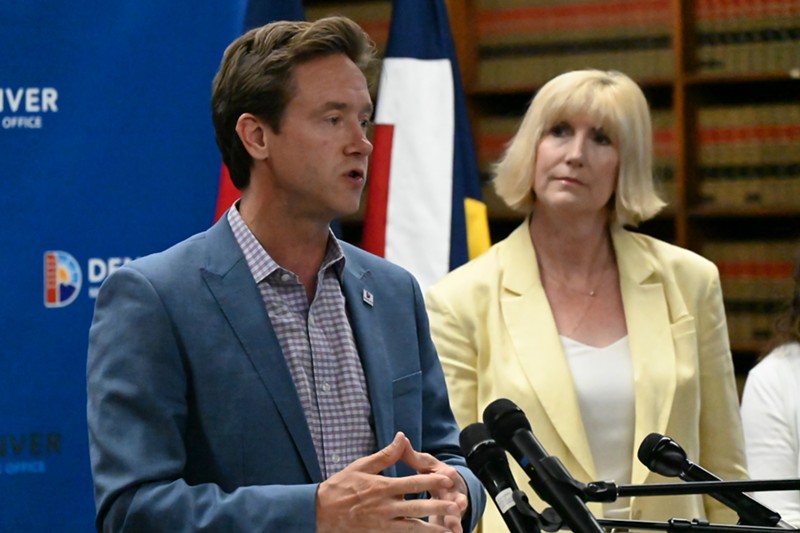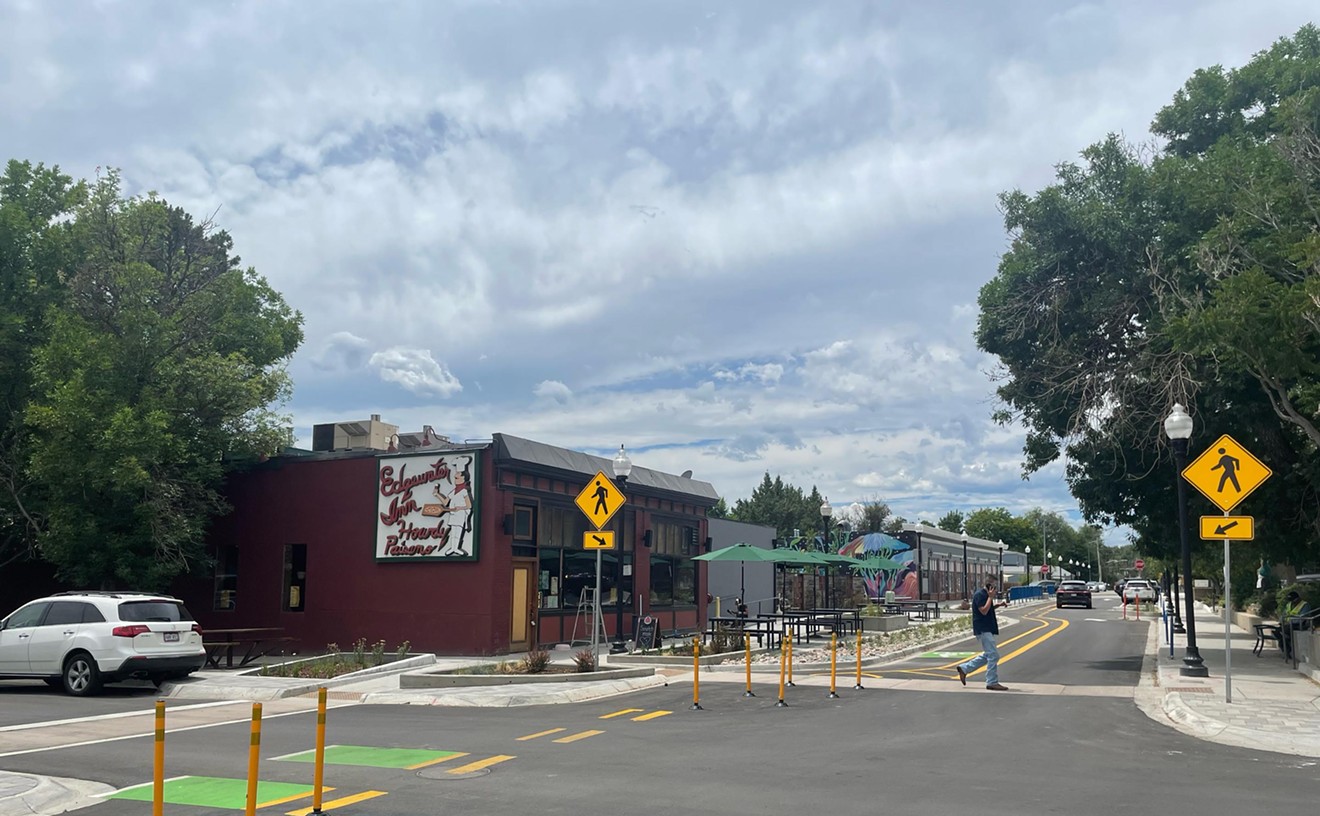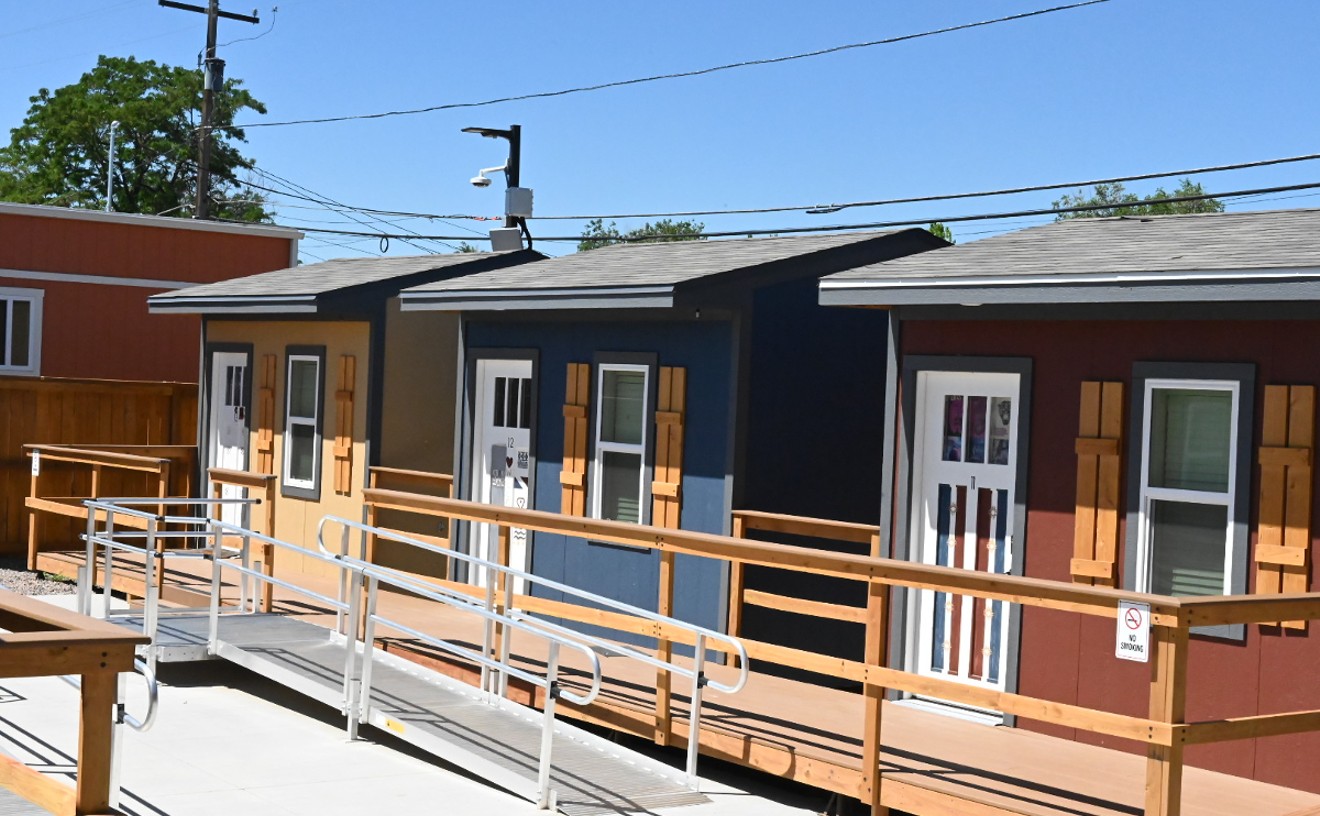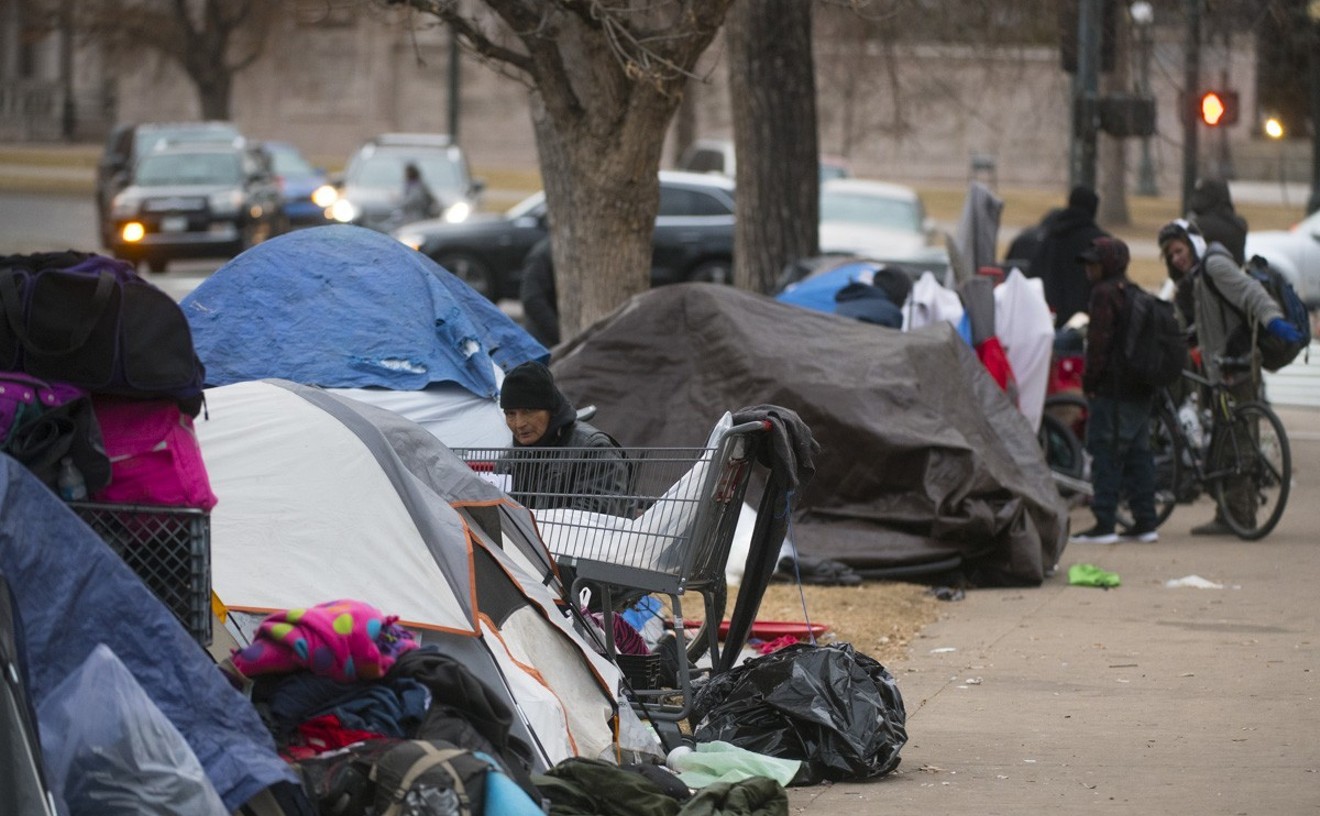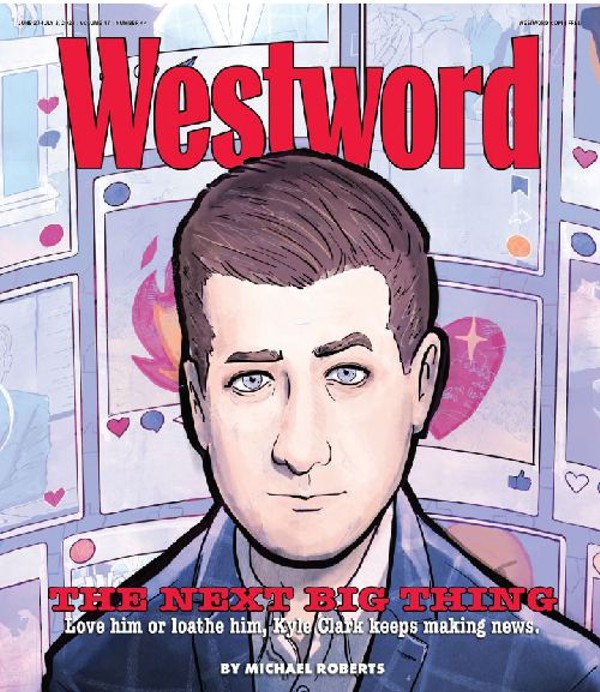Johnston unveiled the System Providing Evidence-Based Enhancements in Denver (SPEED) pilot program during a press conference today, June 24, announcing that the Denver Department of Transportation & Infrastructure will spend $2 million on changes to Alameda Avenue and Federal Boulevard, with $1 million going toward updates to each corridor. According to DOTI, the changes will be implimented in six to eight months.
"Our SPEED program is focused on the single-biggest driver of death and serious injury in the city, which is people driving too fast," Johnston said. "The largest number of those fatalities are happening along our 'high-injury networks.' They are roadways across the city that are the most traveled, the fastest traveled and the most lethal."
During the next eighteen months, motorists on both streets will see more speed limit signs, speed feedback signs that digitally display a car's speed, cameras that take pictures of speeding vehicles and red lights to slow them down. The city is placing ads to alert Denver drivers of the changes, Johnston added.
The transportation department announced two methods to halt speeding motorists: One is setting traffic lights to "rest at red" at nighttime; this means that when no motorists are passing, the lights will automatically turn red until another car approaches. As it is, lights on these streets always rest on green, but the city wants to eliminate riding a "green wave that lets you go fifty miles an hour down a thirty-mile-an-hour corridor," Johnston said.
Traffic lights will be programmed to only turn green at the rate of the speed limit, too, Johnston said.
"That means if you are going faster than the speed limit, you are going to naturally hit red lights," he warned.
Although the city wants people to drive slower and is increasing red light times on Alameda Avenue and Federal Boulevard, DOTI swears that neither of the changes to traffic lights will cause longer waits along these two already-bustling streets. However, a driver traveling the speed limit will hit more green lights with this adjustment, according to DOTI spokesperson Nancy Kuhn.
Meanwhile, the traffic lights for pedestrians will offer more time to cross Alameda Avenue and Federal Boulevard, Johnston said.
The city also expects to ticket more people for speeding on these corridors with cameras that "get your license plate" for a speeding ticket in the mail, Johnston explained.
Only Federal Boulevard from West 52nd Avenue to Floyd Avenue and Alameda Avenue from Sheridan Boulevard to Havana Street will be affected by SPEED. Johnston is focusing on these two corridors to "immediately reduce traffic deaths," as the two corridors have some of the highest rates of traffic deaths and injuries, according to a City of Denver map.
These changes are expected to reduce the number of crashes along the two corridors by between 10 and 50 percent, according to DOTI.
Denver has a goal of eliminating all traffic deaths by 2030 via the Vision Zero plan launched in 2018 under former mayor Michael Hancock.
But DOTI executive director Amy Ford admits that "we've been going in the wrong direction" with Vision Zero as citywide traffic deaths climbed from forty in 2012 to 83 deaths in 2023. The number of serious injuries from crashes has also increased from 292 incidents in 2013 to 422 incidents in 2023, according to DOTI.
But DOTI executive director Amy Ford admits that "we've been going in the wrong direction" with Vision Zero as citywide traffic deaths climbed from forty in 2012 to 83 deaths in 2023. The number of serious injuries from crashes has also increased from 292 incidents in 2013 to 422 incidents in 2023, according to DOTI.
The city is eyeing an expansion of the program during the next two to five years across 35 "high-injury networks," or areas of Denver where data shows the most traffic deaths and serious injuries. Ford tells Westword that DOTI is already looking at making similar road-safety improvements in downtown Denver and the junction where York Street becomes Josephine Street.
Johnston said on Monday that he hopes the SPEED program will address concerns shared in his Community Conversations town hall series, during which residents across several neighborhoods have complained about dangerous speeding.
"We've been having community meetings across the city, and what we hear so often from people is that one of the most important steps to keep them safe is to know that they are safe out on the streets, they are safe if they're driving to or from work, they are safe on their bikes going across town, they are safe just walking," Johnston said.
Residents in Montbello, Highland and southwest Denver all complained about street racing as a big issue during Community Conversations. Johnston said the "rest at red" setting on lights "eliminates late-night racing," but that's assuming people racing their cars respect the red light.
Johnston first discussed his plan to "deploy" road-safety improvements across the city at a Community Conversation two weeks ago in southwest Denver, an area that will be affected by SPEED improvements on Federal Boulevard.

